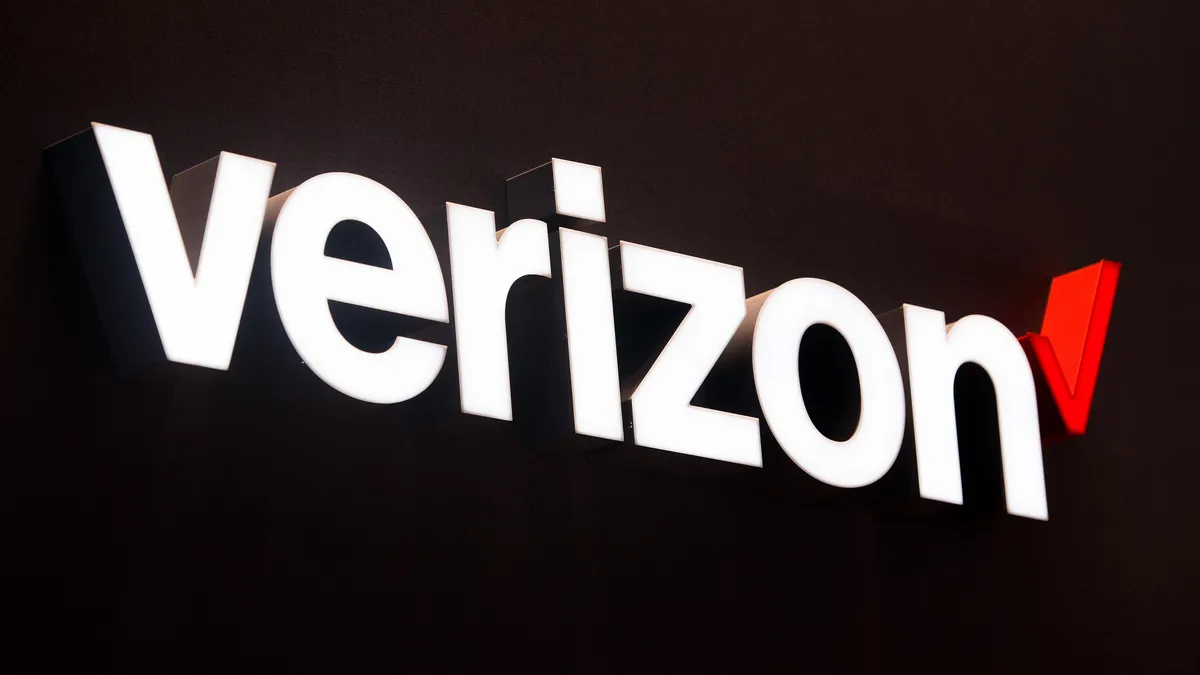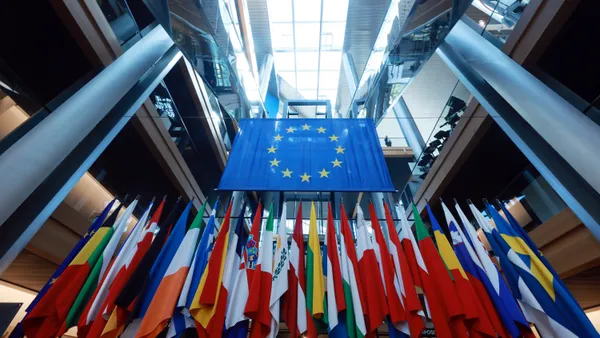Dive Brief:
- Verizon, the nation’s second-largest telecommunications provider, will conduct annual climate risk surveys with other senior business leaders and subject experts, the company said in its 2023 Task Force for Climate-related Financial Disclosures report released last week.
- The company said in connection to the survey — which will ask respondents about risks over the short, medium and long-term — it has changed the time horizons it uses to evaluate climate-related risks, aligning with the timelines used in its financial planning and reporting.
- The network operator’s third TCFD report includes progress it has made in the areas of governance, risk management, strategy and targets since its last report in 2021.
Dive Insight:
Verizon said its risk analysis framework now utilizes an updated third-party climate change scenario and also incorporates the company’s net-zero commitments and planning assumptions, along with extended time horizons.
“I believe that we have to measure and report our responsible business practices to hold ourselves accountable,” Verizon CEO Hans Vestberg said in a LinkedIn post.
The report said the company’s board now has more frequent briefings on compliance with U.S. and international climate regulations as part of its expanded oversight of climate risks. Verizon said it will continue to integrate climate into its business considerations and decision-making processes. The company reported its Global Networks and Technology Group has developed a workflow to drive energy efficiency across the provider’s networks. The forum within the department’s Transformation office collaborates across the organization to find ideas to reduce energy usage and costs on the company’s networks.
Given the two-year gap between the last report, prior company announcements are also disclosed, such as the 2021 creation of the Environmental, Social and Governance Center of Excellence; the launch of its supply chain resiliency program, also disclosed in a company 2022 ESG report; and its 2030 interim target of generating renewable energy capacity that’s equivalent to 100% of its annual electricity consumption. The center is made of several teams implementing an internal control framework and facilitating the company’s compliance with climate change-related regulations.
“[W]e believe that building a better future involves making climate considerations ‘business as usual’ throughout our organization,” Nia Mathis, Verizon vice president and chief ESG engagement officer, said on LinkedIn.
In addition to aligning with the TCFD standards and releasing its own annual ESG reports, Verizon also publishes an index aligned with the Sustainability Accounting Standards Board and the Global Reporting Initiative, according to its ESG resource hub.
AT&T, the nation’s largest telecommunications company, also aligns its reporting with the TCFD’s recommendations — releasing its fourth TCFD report in August — as well as the GRI and SASB standards.
The disclosures come a few months after investors filed a class-action suit against Verizon in August, after a Wall Street Journal investigation revealed both it and AT&T have left networks of lead cables across the country. The report found the lead from the cables has seeped into the soil and water in the communities it lies, leading to both environmental and health impacts for residents. AT&T’s investors filed their own suit in late July after the report.
Both companies have since announced investigations into the issues, but Verizon investors are seeking to recoup losses after the stock dropped following the July 9 report. Investors allege the company violated securities laws by not disclosing the environmental and health risks of its lead-wrapped cables.











